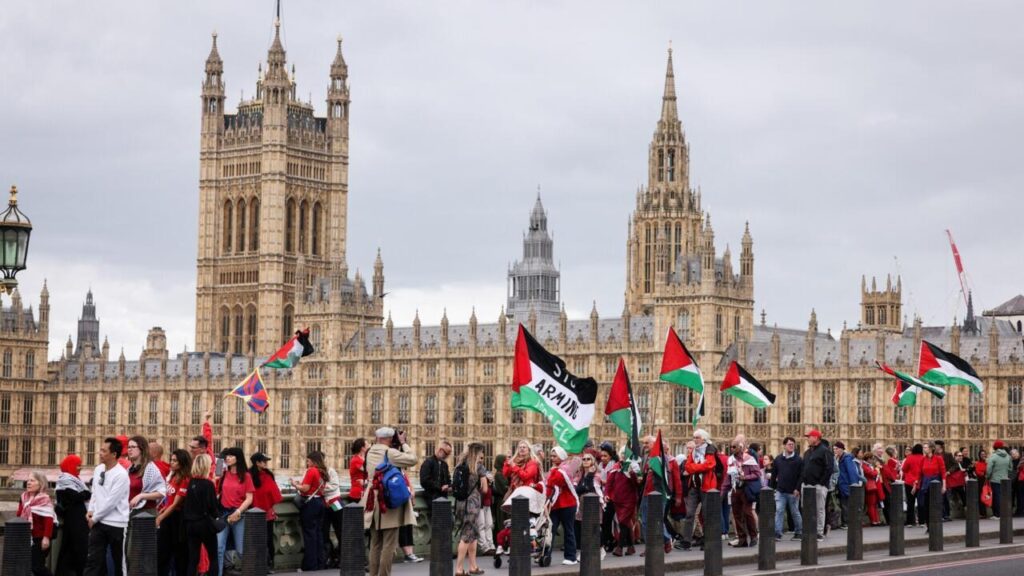
The recent announcement by the United Kingdom that it recognizes the “State of Palestine” has once again raised global debate about the historical, political, and security realities in the Middle East. While the term “Palestine” is often invoked, the actual political geography tells another story. What exists is the Gaza Strip, a narrow coastal enclave that has become synonymous with terrorism, instability, and human suffering—not a functioning sovereign state.
Ancient and Modern Roots of Israel
The Jewish people trace their roots in the land of Israel back thousands of years. From the biblical kingdoms of Israel and Judah to the destruction of the Second Temple by Rome in 70 AD, Jewish presence in the land has been a constant. Despite centuries of exile and dispersion, Jewish communities maintained ties to Jerusalem and other holy sites.
The modern reestablishment of Israel followed centuries of persecution culminating in the Holocaust, in which six million Jews were systematically murdered by Nazi Germany. In 1947, the United Nations voted to partition the British Mandate of Palestine into Jewish and Arab states. The Jewish leadership accepted; the Arab world did not. On May 14, 1948, David Ben-Gurion proclaimed the independence of the State of Israel. The next day, five Arab armies invaded, vowing to wipe Israel off the map. Against all odds, Israel prevailed.
The Six-Day War and Its Results
In 1967, the Six-Day War altered the regional landscape. Surrounded by hostile neighbors—Egypt, Syria, and Jordan—Israel launched preemptive strikes to defend itself from imminent attack. In six days, Israel captured the Sinai Peninsula, the Golan Heights, East Jerusalem, and the West Bank. The Gaza Strip, previously administered by Egypt, also came under Israeli control. This war not only secured Israel’s survival but also restored Jewish access to the Western Wall in Jerusalem for the first time in nearly 2,000 years.
Decades of Terrorism
While Israel built a thriving democracy and economy, waves of terrorism followed. From the hijackings of the 1970s to suicide bombings during the Second Intifada, Israelis endured relentless assaults on buses, restaurants, and schools. The rise of Hamas, an Iranian-backed Islamist terror group, turned Gaza into a launch pad for rockets and attacks against Israeli civilians. Daily barrages have forced millions of Israelis to live under constant threat, rushing into bomb shelters at the sound of sirens.
The October 7th Massacre
The deadliest attack in modern Israeli history came on October 7, 2023. Hamas militants poured out of Gaza in a coordinated assault on southern Israel. They massacred families in their homes, raped women, beheaded infants, and kidnapped over 200 people—including children and the elderly. More than 1,200 Israelis were murdered in one day, shocking the world and proving that Hamas’s aim is not peace, but annihilation.

On October 7, 2023 Islamic terrorists from Gaza and other bordering sites attacked helpless Israelis going about their daily routines, murdering thousands, including chopping babies up and raping and murdering women and children
The Problem of Gaza
No Arab country has offered to take responsibility for Gaza’s people. Egypt, which shares a border, keeps it sealed. Jordan, Lebanon, and Saudi Arabia, despite their rhetoric, refuse to absorb refugees from the enclave. The reality is that Gaza has become a weaponized territory designed to bleed Israel.
Gaza’s location also presents strategic complications. Wedged along the Mediterranean, it effectively narrows Israel’s access to the sea and creates a long-term security threat. Israel’s withdrawal from Gaza in 2005, intended as a step toward peace, led not to stability but to Hamas’s takeover and an escalation of daily rocket fire.
Some argue that the only long-term solution is for Gaza to become part of Israel again, repopulated by Israelis who can build cities, seaports, and commercial beaches that would benefit the entire nation. Others propose compromise solutions—such as dividing Gaza, with the northern half integrated into Israel proper and populated by Israelis, and the southern half left for Arab administration. Such a move would give Israel greater security and greater open access to critical Mediterranean trade routes while still providing Arab residents a less deadly alternative zone.
The UK’s recognition of “Palestine” may make headlines, but it sidesteps the brutal reality: Gaza is not a state but a terror enclave. Israel, the only true democracy in the Middle East, continues to fight for its survival against enemies that reject its very existence. Until the world acknowledges this reality—and until Gaza ceases to be a hub of violence—the dream of peace will remain distant.
James Thompson is an author and ghostwriter, and a political analyst.
Sponsored by BasicInfo123 — simple bite-sized guides for life, money, civics, and more—because some stuff school just didn’t cover.

Leave a Reply